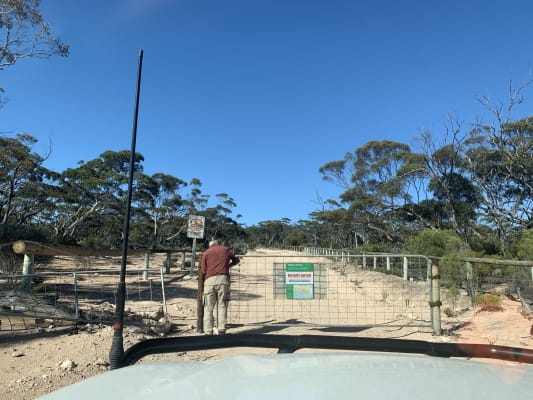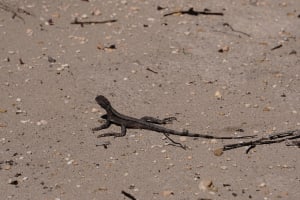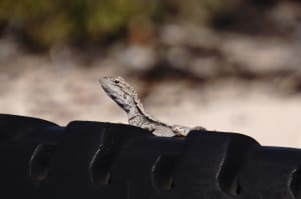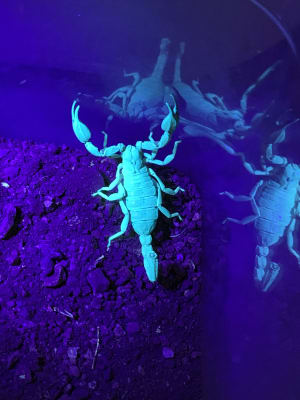Today we headed out to look for dragons. The weather was set to be hot – perfect for reptiles! Our first stop was to enter the Yalata Indigenous Protected Area. The ecologist that led this excursion explained that this region is not open to the public but if you conducted this type of environmental study you can obtain a permit to enter.

The region was a beautiful mallee bushland with plenty of leaf litter and old logs for lizard habitat. As Dave explained when looking for lizards you need to think about what they need: food, shelter and warmth. So this area looked to have a lots of insects in amongst the low shrubs, plenty of shelter from the taller trees and no end of fallen logs or rocks to sit on to warm up. We found a couple of crested dragons and painted dragons that were very well camouflaged. We even tried to catch one or two but once they knew that we were near them they sprinted off like little miniature dinosaurs from Jurassic Park! During our drive we went to a beautiful beach looking for a special beach lizard and along the way spotted many different birds including some amazing Red-necked stints that migrate from the arctic all the way to this coastline.
It’s interesting to learn that some animals will travel very long ways in the lifetime like the stints but others like the crested dragons and painted dragons only live in small areas of their preferred food and habitat like the rocky and seaweed area of the beach or the fallen logs in the mallee bushland.


One of the most exciting finds of the days was a scorpion – shown in the photo – when we came back to camp the scientist shone a UV light onto it that makes it light up!

Question for the day: I wonder why this happens and do you think this happens when you shine UV on other animals.
Bonus Question: Look up the Red-necked stint to find out more about it and where exactly it flies from to get here?